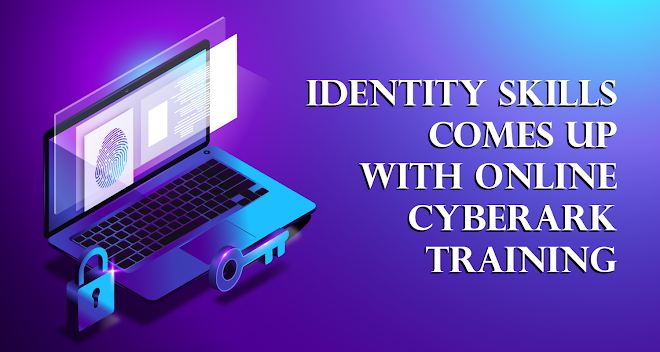CyberArk Vault Management: A Deep Dive into Administration and Maintenance
In the ever-evolving landscape
of cybersecurity, safeguarding sensitive data and privileged accounts is
paramount. CyberArk, a leading name in the industry, provides a robust solution
for managing and protecting these critical assets. In this comprehensive guide,
we will take a deep dive into the world of CyberArk Vault Management, focusing
on the administration and maintenance aspects. Whether you're an IT
professional, a system administrator, or someone looking to bolster your
organization's security, this article will equip you with the knowledge you
need to efficiently manage and maintain your CyberArk Vault.
For those seeking CyberArk
online training, this article serves as a valuable resource to gain
insights into CyberArk Vault Management without adding extra content.
Understanding the Importance of CyberArk Vault
Before delving into the
administration and maintenance aspects, let's establish why CyberArk Vault is
such a critical component in the world of cybersecurity.
CyberArk Vault is a dedicated
solution for managing privileged accounts, secrets, and sensitive data. It acts
as a secure repository, safeguarding these crucial elements from potential
threats and unauthorized access. Here are some key reasons why CyberArk Vault
is indispensable:
1. Privileged Access Protection: CyberArk Vault offers a robust defense mechanism
against unauthorized access to privileged accounts. It ensures that only
authorized individuals can access sensitive systems and data.
2. Comprehensive Security: With multiple layers of security, including
encryption and access controls, the Vault provides a comprehensive shield for
sensitive data.
3. Compliance: For organizations that need to adhere to industry
regulations and compliance standards, CyberArk Vault simplifies the compliance
process by securing and auditing privileged access.
4. Session Recording: The Vault captures and stores all privileged
sessions, enabling organizations to review and audit user activities for
security and compliance purposes.
The Role of a CyberArk Administrator
To effectively manage and
maintain a CyberArk Vault, it's crucial to understand the role of a CyberArk
Administrator. The Administrator plays a pivotal part in ensuring the system's
smooth operation and its ability to protect sensitive information. Here are
some key responsibilities of a CyberArk Administrator:
1. User Management: Administrators are responsible for creating,
modifying, and removing user accounts within the Vault. They assign appropriate
access rights to users based on their roles and responsibilities.
2. Safeguarding Credentials: They manage the storage and retrieval of
privileged account credentials, ensuring that these critical assets are
protected and readily available when needed.
3. Monitoring and Auditing: Administrators continuously monitor the Vault for
suspicious activities and conduct regular audits to maintain security and
compliance.
4. Troubleshooting: In case of issues or incidents, Administrators
are the first line of defense. They troubleshoot and resolve problems to ensure
uninterrupted service.
Best Practices for CyberArk Vault Administration
Now that we understand the
importance of CyberArk Vault and the role of an Administrator, let's explore
some best practices for effective administration:
1. Regular Password Rotation: Enforce a policy for regular password rotation
for privileged accounts stored in the Vault. This practice reduces the risk of
compromised credentials.
2. Multi-Factor Authentication
(MFA): Implement MFA for Vault access
to add an extra layer of security. This ensures that even if credentials are
compromised, unauthorized access is thwarted.
3. Access Control: Strictly control and limit access to the Vault.
Only authorized personnel should have access, and their permissions should
align with their job roles. For those interested in enhancing their skills,
consider enrolling in a CyberArk
course.
4. Continuous Training: Keep the Administrator and support teams
well-trained and updated on the latest security threats and best practices.
5. Regular Backups: Perform routine backups of the Vault to ensure
data recovery in case of system failures or data loss.
Maintenance and Troubleshooting
Maintenance is essential to keep
the CyberArk Vault running smoothly. Here are some maintenance tasks to
contemplate:
1. Patch Management: Regularly update the Vault software and apply
patches to address security vulnerabilities.
2. Performance Optimization: Continuously monitor the Vault's performance and
make adjustments to ensure it operates at its best.
3. Incident Response: Have a well-defined incident response plan in
place to address security breaches or system failures promptly.
4. Data Retention: Define data retention policies to avoid the
unnecessary accumulation of sensitive data.
Conclusion
In conclusion, CyberArk Vault
Management is a crucial component in any organization's cybersecurity strategy.
Effective administration and maintenance of the Vault are essential for
safeguarding sensitive data and privileged accounts. By understanding the role
of a CyberArk Administrator and following best practices for administration and
maintenance, you can ensure the security and integrity of your organization's
critical assets. Stay vigilant, stay updated, and stay secure with CyberArk
Vault Management to work towards achieving Cyberark
Certification.
For more information, contact
us at:
Call:+916204012089/+916207605341
Email:support@identityskills.com
Visit:www.identityskills.com
.png)
.jpg)

Comments
Post a Comment